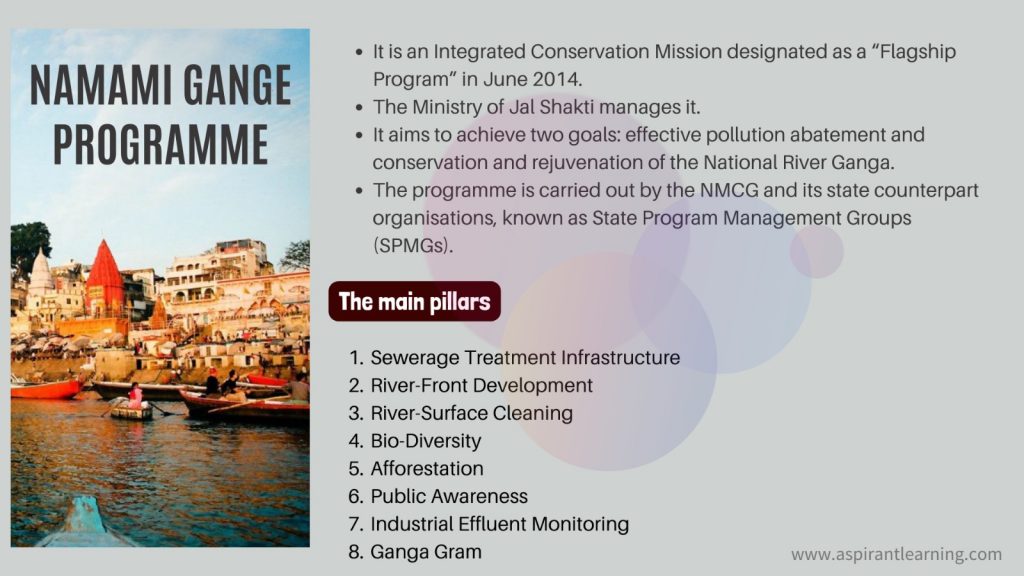News Highlight
Reviving Adi Ganga: Central funds, the international project gives hope.
Key Takeaway
- Efforts to resurrect the ailing Adi Ganga, the original Ganga canal that runs through Kolkata, may finally see the light of day.
- The National Mission for Clean Ganga has set aside approximately Rs 650 crore to revitalise the ancient river.
- It has also been included in a multi-country river pollution-fighting effort.
- The changes follow the National Green Tribunal’s directive to the West Bengal government to finish its revitalisation positively by September 30, 2025.
Adi Ganga
- About
- Adi Ganga is a stream in the Kolkata district of India that was once part of the Hooghly River.
- Before the 17th century, the river’s major course was the Adi Ganga.
- Sundarbans are the river’s headwaters.
- Around 1750, a canal was built to connect the river’s main stream with the lower Saraswati River.
- The resulting Hooghly became the major river stretch, while the Adi Ganga became a secondary tributary.
- Since then, its water quality has continuously degraded until it became a sewer and increasingly encroached upon.
- Eventually, filling up just outside the municipal corporation’s boundaries.
- Furthermore, after crossing the city, the river disappears into Kolkata’s concrete buildings, halls, and roadways.
Major Issues and Developments Associated with Adi Ganga
- Encroachment History
- The river was formerly the primary Ganga channel until the 17th century.
- It has been ignored for decades and is now filthy and encroached upon.
- The choking of the Adi Ganga had a heavy influence on the area’s natural drainage.
- Nonetheless, Adi Ganga thrived until the 1970s.
- Since then, its water quality has gradually degraded until it became a sewer and was rapidly encroached upon.
- In addition, the Calcutta High Court ordered in 1998 that all encroachments on the river be removed within a month.
- Unfortunately, another assessment revealed that the encroachments remained nearly two decades after the first directive.
- Current Status
- The river is nearly dead and has turned into a sewer, with 17 million faecal bacteria in 100 millilitres of river water.
- Furthermore, data from the state pollution control board show zero dissolved oxygen.
- Rejuvenation
- The National Green Tribunal has ordered the West Bengal government to finish its revitalisation “positively” by September 30, 2025.
- The river was chosen for pollution research during an international water conference organised by the non-profit Action Aid in Sylhet, Bangladesh.
- Apart from the Adi Ganga, the conference chose Buriganga in Bangladesh, Puyang in China, Bagmati in Nepal, and Klang in Malaysia for pollution research.
National Mission for Clean Ganga (NMCG)
- About
- The NMCG was registered as a society under the Societies Registration Act of 1860 on August 12, 2011.
- The National Council carries out the NMCG for River Ganga Rejuvenation, Preservation, and Management, commonly known as the National Ganga Council.
- Objective
- The NMCG’s goal is to eliminate pollution and ensure the rehabilitation of the Ganga river.
- This can be accomplished through increasing intersectoral coordination for comprehensive planning and management.
- As well as maintaining a minimum ecological flow in the river to ensure water quality and environmentally sustainable development.
- Organisation Structure
- National Ganga Council under the chairmanship of The Prime Minister of India.
- Empowered Task Force (ETF) on river Ganga under the chairmanship of Union Minister of Jal Shakti (Department of Water Resources, River Development and Ganga Rejuvenation).
- National Mission for Clean Ganga (NMCG).
- State Ganga Committees
- District Ganga Committees in every specified district abutting river Ganga and its tributaries in the states.

Pic Courtesy: Down to Earth
Content Source: Down to Earth



